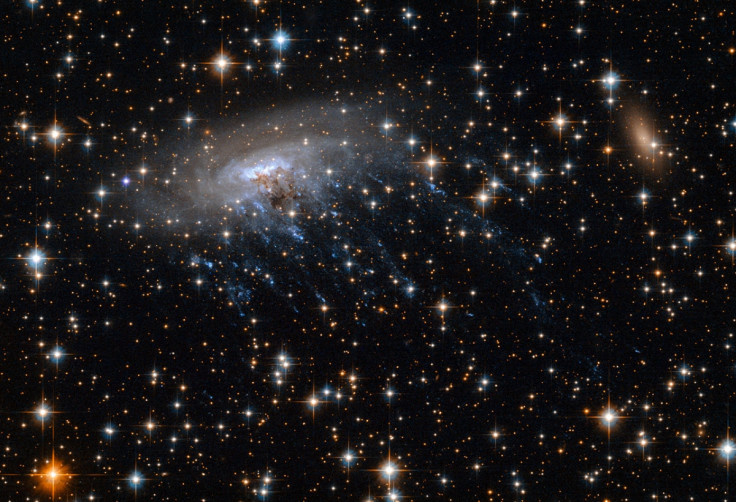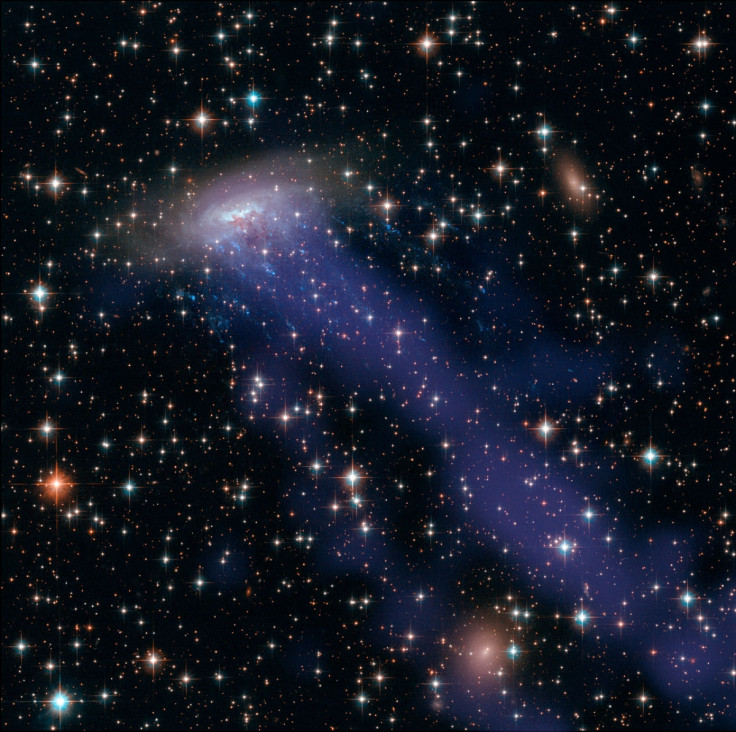Hubble Space Telescope Reveals Spiral Galaxy ESO 137-001 Collision

An image from the Hubble Space Telescope has revealed the galaxy cluster Abell 3627 ripping apart a spiral galaxy, leaving luminous blue streaks of the galaxy's entrails across space.
The spiral, known as ESO 137-001, is situated in the southern constellation of Trangulum Australe. Amongst the backdrop of space, the blue streaks reflect ultraviolet light as the spiral moves through the cluster. As reported on the Hubble website, they are "telltale clues to the cosmic crime".
The streaks are hot, young stars covered in wispy streams of gas that are being torn away from the galaxy as it moves through space.

Ram pressure stripping is the process visible, a drag force felt by an object as it moves through a fluid. In this case, superheated gas is the fluid which lurks at the centre of galaxy clusters.
The evolution of galaxies can be better understood with the study of ram pressure stripping.
The effect on this galaxy leaves it with little of the cold gas that is essential for star formation, rendering the galaxy incapable of forming new stars.
The forces exerted by the heated gas are also revealed by the curved appearance of the gas and dust, which is shown in the image.
The cluster's drag is strong enough to bend ESO 137-001, but the galaxy's gravitational pull is strong enough to hold on to the majority of its dust.
However, the brown streaks of dust displaced by the stripping are still visible.
ESO 137-001 is part of the Norma Cluster, a rich cluster of galaxies near the centre of the Great Attractor.
Ordinarily, it is difficult to observe because it is located in the Zone of Avoidance, near the plane of the Milky Way. The cluster is obscured from view by interstellar dust at optical wavelengths.
Yet data from the Hubble's Wide Field Camera 3 has managed to capture not only the cluster, but the harsh environment inside its heart.
The Norma Cluster is located around 200 million light-years away from the Milky Way. According to researchers, our galaxy and its home group, the Local Group, are being steadily dragged towards the region.
© Copyright IBTimes 2025. All rights reserved.






















